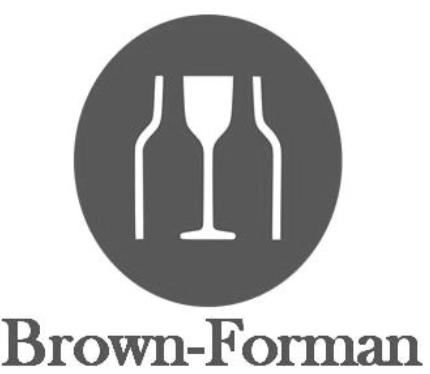Owsley Brown
Owsley Brown, I was born in Louisville, Kentucky in February, 1879. He was the oldest living son of seven children between Amelia and George Garvin Brown, who was the founder of the Brown-Forman Corporation. Owsley was a graduate of Centre College in Danville, Kentucky. He earned his law degree from the University of Virginia Law School. When he was 22 years old he married a local girl named Laura Lee Lyons and in 1906 and 1908, respectively, they had two children, William Lee Lyons Brown and Amelia Brown Frazier.
In 1910 Owsley made the crucial decision to join the family business. This began a tradition of family apprenticeships that continued for more than a century. At that time, nepotism ruled at Brown-Forman, the meritocratic sort of nepotism, for the most part, but nevertheless one that still allowed primogeniture to determine who might become CEO. Thus, after George Garvin Brown died in 1917 at the age of 70, his son, Owsley Brown, I, took the helm as president of Brown-Forman.
The eighteenth Amendment instituting Prohibition passed in 1920, making it illegal to manufacture, transport or sell alcoholic spirits. Owsley Brown applied for and received one of only six licenses to bottle whiskey for medicinal purposes during that time. Brown-Forman made its first acquisition in 1923 and purchased Early Times from John Henry “Jack” Beam. In doing so, Owsley Brown ensured that Brown-Forman’s whiskey supply lasted throughout prohibition and into the leanest years of the whiskey industry. By buying the entire stock of Early Times and moving it to the company’s government-designated warehouse in Louisville, Owsley guaranteed Brown-Forman’s place at the top of the distilled spirits industry.
Soon after Prohibition began, an unofficial U. S. Whiskey Cartel led by Brown-Forman was sent to Europe to attempt to sell over 20,000 barrels of bourbon, however, the mission was only partially successful. When Prohibition was repealed with the 21st Amendment, Brown-Forman, which by then was ready to produce Old Forester as well as Early Times, had a supply of aged whiskey on hand to kick off the 1933 celebrations. Unfortunately, the company’s 1934 fiscal year, which was supposed to be a blockbuster, didn’t turn out to be as profitable as predicted. In a bold show of leadership, Owsley Brown did the honorable thing and offered half of his stock to disappointed investors in lieu of a dividend.
In 1933, Owsley Brown of Brown-Forman and a group of other concerned distillers also met with attorneys from the Wholesale Liquor Dealers Association in Washington, D.C. They aimed to unite the entire distilled spirits industry, write a code of conduct that would be acceptable to all, and convince everyone in the industry to sign it. The idea was that the distillers would show their willingness and ability to police themselves from within and prevent post-Prohibition bars from becoming the seedy, unregulated dives they had been before Prohibition. To a very large extent, the plan worked.
In 1940, Brown-Forman purchased the Old Kentucky Distillery in Louisville, which remains the Old Forester Distillery today. Then in 1941, they purchased the Labrot & Graham Distillery in Versailles, Kentucky, which was originally founded in 1812 by bourbon-making pioneer Elijah Pepper. The Labrot purchase was made at the same time that World War II forced the Old Forester Distillery in Louisville to produce industrial alcohol for the war effort. The last of Owsley Brown’s accomplishments occurred in 1945 with the founding of the Bluegrass Cooperage, which allowed Brown-Forman to produce its own barrels. Owsley Brown I went on to become Chairman of the Board at Brown-Forman in 1945, where he led the company’s first (though unsuccessful) attempt to buy the Jack Daniel’s Distillery in 1950. Owsley Brown I was named Board Emeritus of Brown-Forman in 1951.
In 1951, Owsley Brown also retired and turned control of the company over to his son, W. L. Lyons Brown. Bittersweetly, Owsley’s retirement occurred just as Early Times became the #1 selling whiskey in North America.
Owsley Brown I passed away on Halloween of 1952 in Louisville, Kentucky. He was inducted posthumously into the Kentucky Bourbon Hall of Fame in 2008, becoming only the third of 7 Brown-Forman Corporation employees to be inducted into the Bourbon Hall of Fame, behind only his father, George Garvin Brown, and, later, Master Distiller Lincoln Henderson.
Contributed by Colonel Craig Duncan, Columbia, Tennessee
These are the two versions of Old Forester that were produced during the time of Owsley Brown, I’s tenure. They are: 1.) Old Forester 1910 Old Fine Whisky and 2.) Old Forester 1920 Prohibition Style.
Early Times was the first brand that the Brown-Forman Corporation acquired. Early in the 1950’s Early Times became the number one selling whiskey in North America. There are a number of expressions of Early Times currently found in both the United States and abroad, they are from left to right; 1.) Early Times Blended Whiskey, 2.) Early Times 354 Bourbon, 3.) Early Times Bottled-in-Bond Bourbon (100 proof), 4.) Early Times Yellow Label (available in Japan), 5.) Early Times Old Reserve (available in the United Kingdom).
In 1996, Master Distiller Lincoln Henderson of Woodford Reserve unveiled the popular small-batch brands..These are: 1.) the Kentucky Straight Bourbon Whiskey using Corn, 2.) Kentucky Straight Rye Whiskey using Rye, 3.) Kentucky Straight Malt Whiskey using Barley Malt and 4.) Kentucky Straight Wheat Whiskey using Wheat.
Woodford Reserve has perfected it Double Oaked Collection which includes: 1.) Woodford Reserve Double Oaked Small Batch (Old Package), 2.) Woodford Reserve Double Oaked Small Batch (New Package), 3.) Woodford Reserve Double Oaked Single Barrel (Old Package) and 4.) Woodford Reserve Double Oaked Single Barrel (New Package).








